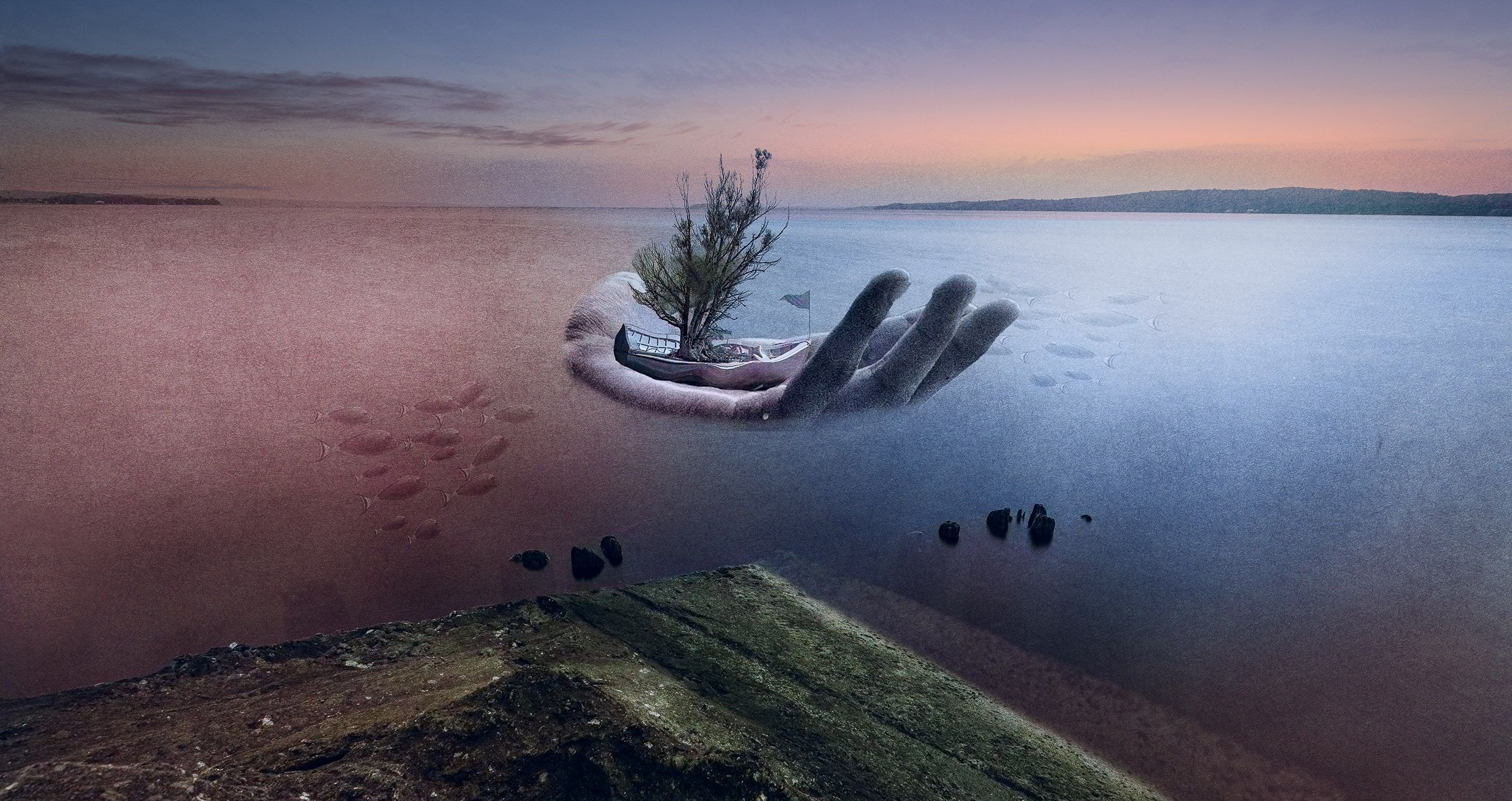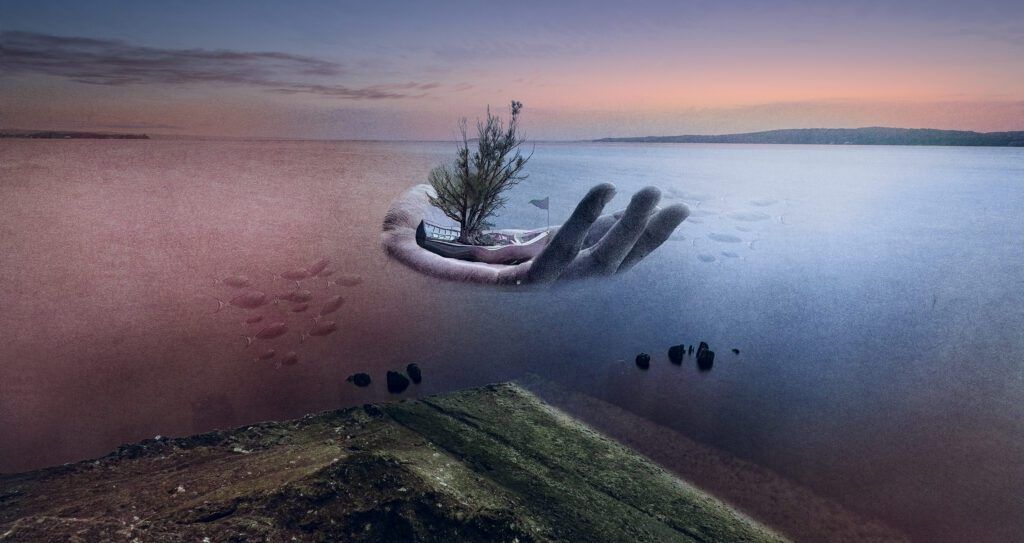Surreal photography has its roots in the surrealist movement in literature and the visual arts in the early part of the 20th century. The surrealists rejected the rational way of seeing the world. Salvador Dali’s melting clock painting “The Persistence of Memory” is one of the most recognizable examples of surrealist art. Surrealists took inspiration from dreams and flights of imagination. But it is one thing to paint from the imagination and another to create photographs that reject reality.
Surrealism is a form of artistic rebellion. Artists show the human experience in odd, often bizarre ways. Surrealism goes beyond the ordinary and beyond what is real. But in photography, we are very much centered on reality. Our subjects come from the world around us. Surrealist photographers change reality. Sometimes they change it in post-processing. Other times, they simply change our perception of reality.
Surrealist photographers change reality. Sometimes they change it in post-processing. Other times, they simply change our perception of reality.
Surrealism is more than simply changing reality. Photographers change reality all the time when post-processing images. We remove powerlines and replace skies. We change colors and smooth skin. Changing reality is not what makes a photo surreal. A surreal image takes elements of the real world and changes them or unrealistically combines them. There is often a deeper meaning behind surrealist art. The photo often taps into the unconscious mind showing the world of dreams and emotions. To a large extent, surrealism is personal. But there is often a dark style associated with this type of photography.
Surrealist photographers use many different techniques for creating a fantastic world. But that does not necessarily mean a lot of post-processing. Some surrealist effects can only be achieved in post-processing, but you can also create surrealistic images in-camera. Let your imagination guide image creation. In this guide, we will explore ways to create surrealism in photography. Through these examples, we hope to inspire your imagination.
What we will cover:
- Techniques for creating surreal photographs in-camera
- Techniques for creating surreal photographs in post-processing
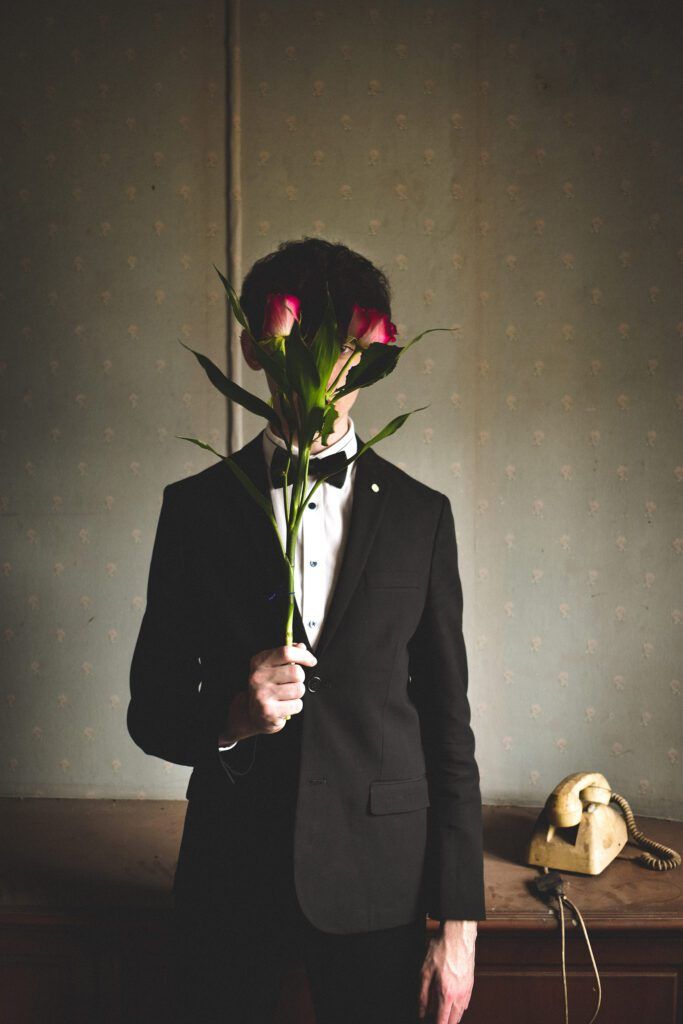
Surreal photography can be based on reality. In this image, the photograph is staged in a surrealistic style. The subject is made anonymous by the bouquet of flowers. Photography by Quinn Buffing
Recommended Reading: If you want to learn how to enhance your photos and create better images, grab a copy of Photzy’s premium guide: Ultimate Guide to Fundamental Editing.
Techniques for Creating Surreal Photographs In-Camera
When you think of surrealism, you may think of composite images. These are created digitally in a post-processing program like Photoshop. Many surreal photographs are created this way, but you can also create surreal images in-camera without any post-processing at all. The world can be a very strange place if you change your perspective. The hardest part is seeing the possibilities.
Intentional Motion Blur
Anything moving when your shutter is open will blur. We sometimes get this blur unintentionally. When we blur motion intentionally to create an effect, we call it Intentional Motion Blur or IMB. Motion blur creates a dreamy effect perfect for surrealism.
The world can be a very strange place if you change your perspective. The hardest part is seeing the possibilities.
Slow your shutter speed and move the camera as you open the shutter. Try moving your camera fast and slow and in different directions. The movements create different effects.
IMB creates mystery by removing defining details that we rely on to identify people and objects. A person moving their head back and forth becomes anonymous, faceless. Ghosts appear in an empty room. Or the world around a still figure appears to pass by at speed. The effect is eerie. We recognize a general shape, but it lives in a world of dreams.
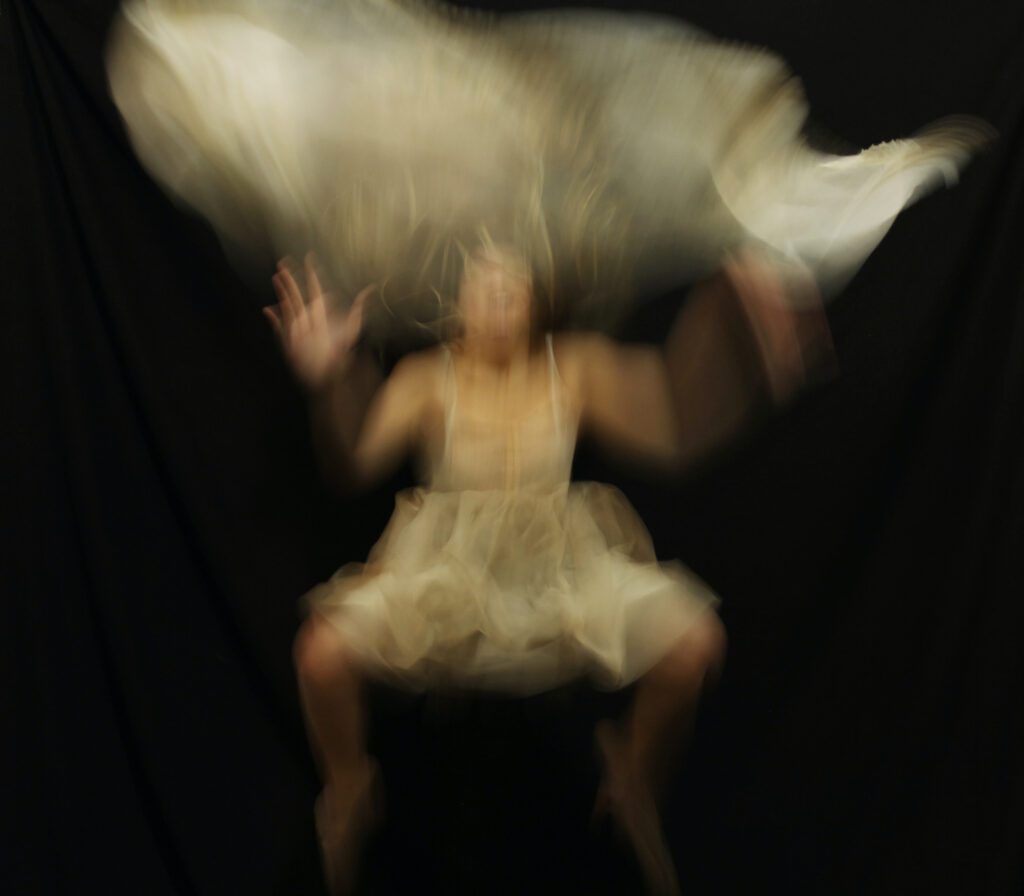
Intentional Motion Blur obscures the details of this person, and she appears to float in blackness. Photography by Cintia Matteo
You can capture motion in your camera, but you can also create motion effects in Photoshop. Use the blur tool or one of the blur filters.
Juxtaposition
Many surrealist photographs use juxtaposition. Juxtaposition is placing elements close together for comparison or contrast. Photographing one object on its own may not be surreal, but placing it next to another, and we can see the irony or the absurdity. Juxtapositions create a new meaning.
Look for juxtapositions that highlight the impossible or the absurd. Extremes in size or shapes can make for a surrealistic photograph; for instance, a very large and very small dog playing, a little cat with a big shadow, or finding faces in the placement of objects. The face does not exist, but our minds are hard-wired to see faces.
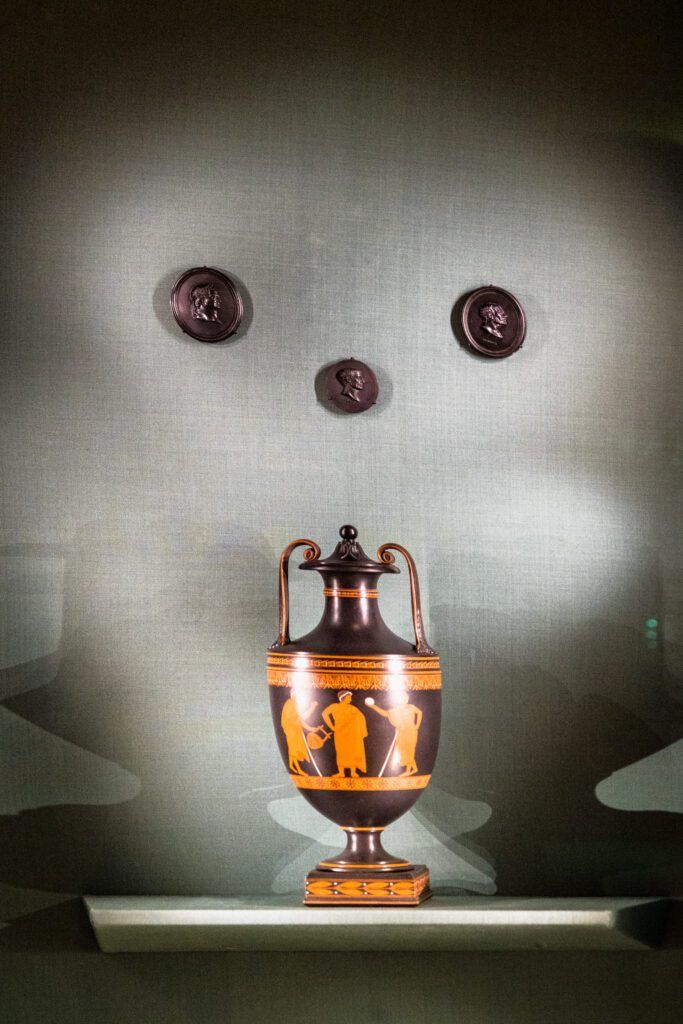
The curators at this museum probably did not realize that they created a face. The eyes and nose are medallions on the wall. The vase is a mouth. Some interesting lighting makes it looks like cheeks are puffed out. Photography by Jenn Mishra
Photograph objects out of place, like a chair in a field or a door on a beach. Also, look for layering; for example, one object or person in front of another, an apple replacing a person’s face, or a sign that reads the opposite of the situation. Funny or absurd situations are all around us. Try looking for them in your next photoshoot.
Forced Perspective
Forced perspective is a particular kind of juxtaposition. For this type of photograph, you place two elements in the frame: one in the foreground and one in the background. The two subjects are placed to look like they are interacting. It is an illusion.
Forced perspective takes advantage of the two-dimensional nature of photography. Your camera cannot read depth. A person close to the camera and a structure in the background appears the same size in the camera. The camera flattens the distance between them.
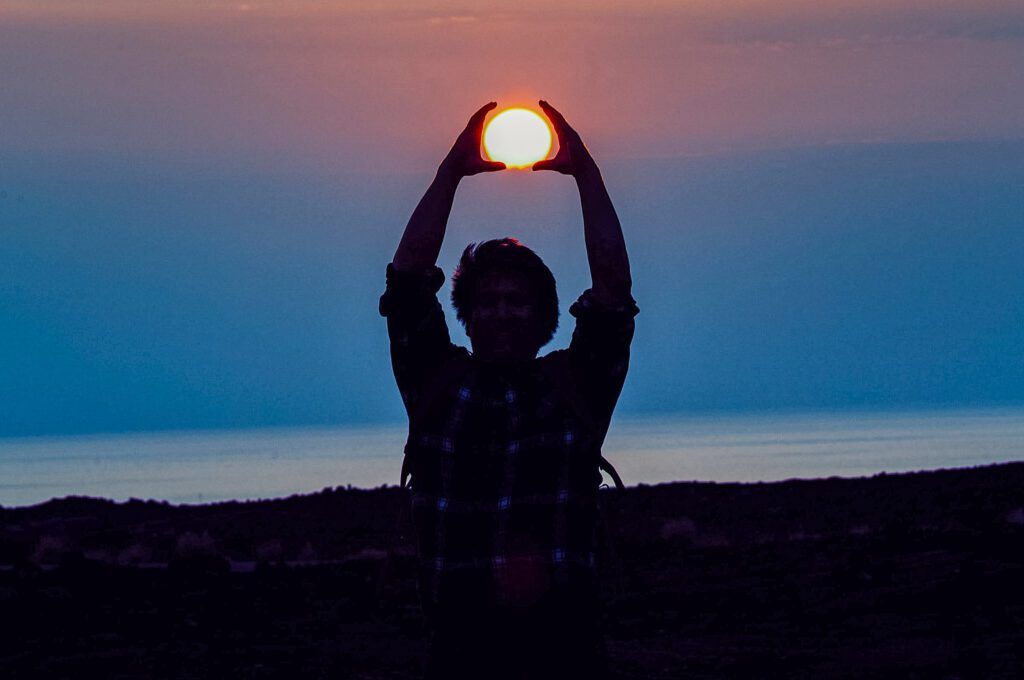
Catching the sun or the moon is a popular type of forced perspective picture. Photography by Jason Leung
The subjects are real, but the situation is surreal. We know that you cannot put the sun in the trunk of your car or hit the moon like a baseball. You may have created a forced perspective image before. It is a popular type of photograph. If you have visited the Leaning Tower of Pisa, you may have pictures of family members trying desperately to hold up the tower.
Forced perspective images are usually planned. The subject cannot see the final effect, so you will have to direct their actions as you look through the camera.
Distort Reality
Many things around us distort reality. We can use these natural distortions to create surreal images. Let’s look at two surfaces that distort reality: glass and water.
We can look through the flat glass and not even notice it is there. Imperfections or the shape of the glass, an old window, or a glass bottle create distortions of reality. If you change your perspective, then the distortion also changes. Reflections in mirrored glass can also distort reality. In the right lighting and angle, the reflections are mirrored to infinity in an Alice in Wonderland kind of way. There are so many ways to play with light and color using glass. In photography, a popular effect is created by shooting through a glass ball. The light refracts and flips the image upside down.
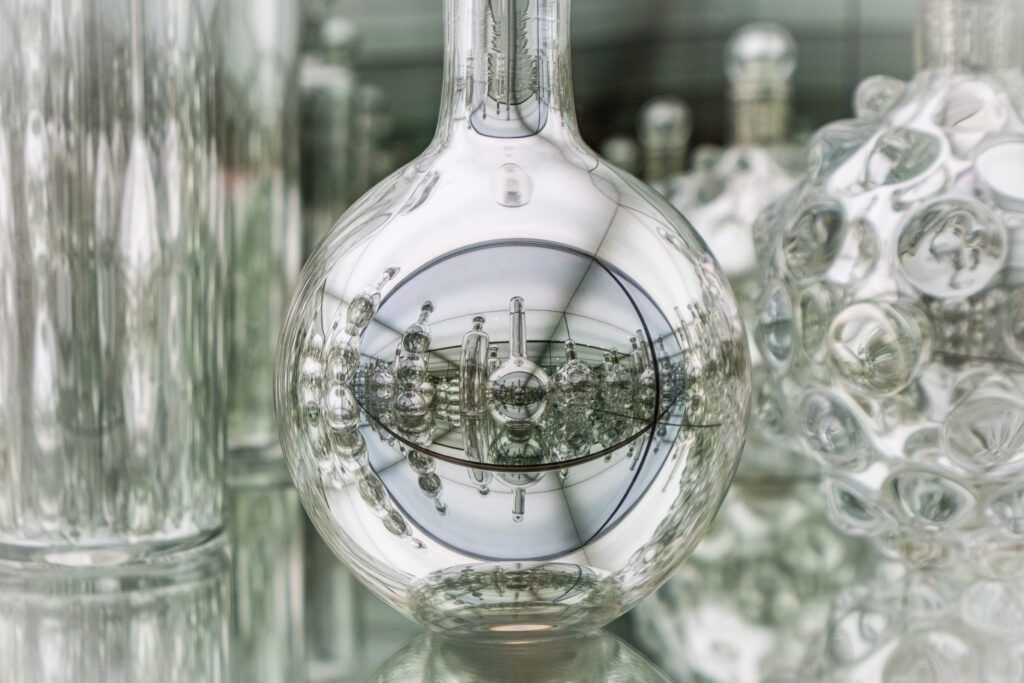
This display of mirrored glass bottles in a museum distorts the reflection and repeats it into infinity. A surreal world that never ends. Photography by Jenn Mishra
Water reflections also distort reality. Depending on the movement of the water, you may get a mirrored reflection of reality or abstract shapes. The distortions are there. You simply have to capture them.
Change Perspective
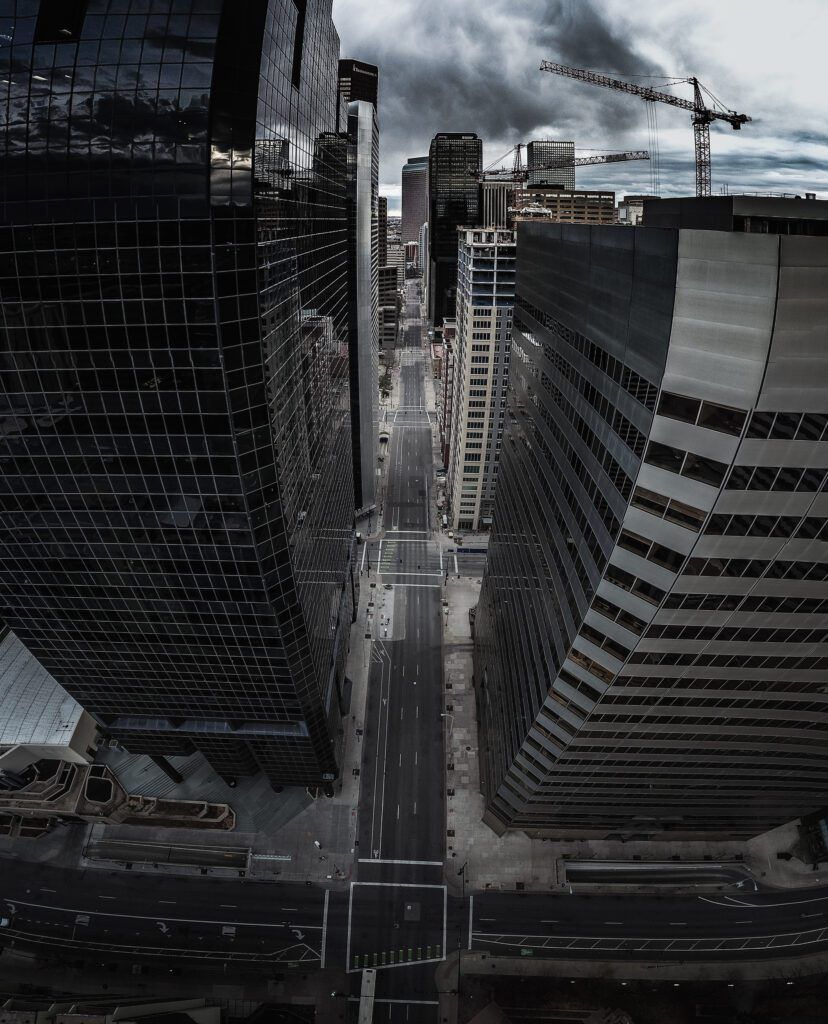
The street scene is real, but the high perspective and the lens distortion create a surreal effect. Photography by Henry Desro
Sometimes all you need to do to see the world strangely is change your perspective. Get low and look up. Look down from above. A low perspective will emphasize a subject close to the lens. A snail close to the camera becomes a giant.
Use a wide-angle lens to further distort the view. Buildings bend and face bulge.
Recommended Reading: If you want to learn how to enhance your photos and create better images, grab a copy of Photzy’s premium guide: Ultimate Guide to Fundamental Editing.
Techniques for Creating Surreal Photographs in Camera
The real world can be full of surreal possibilities. With photo editing programs, you can emphasize the absurdity or create completely new worlds. Let’s start with some simple techniques created by altering or changing reality in post-processing. Technically, any time we change or remove something from an image, we are altering reality. In this case, you change the picture to create an impossible or unusual effect. The picture itself is not surreal, but what you do with it in post-processing is.
Double Exposure
With double exposure, you juxtapose two different images blending them to create one. Some cameras let you take double exposures in the camera. You can also make these with a photo editing program. Mixing the parts creates something new, a place that defies gravity or morphs into something else. A face becomes a tree with leaves for hair, or one person becomes another. One of my favorite techniques is to copy an image of a real place and flip it in Photoshop.
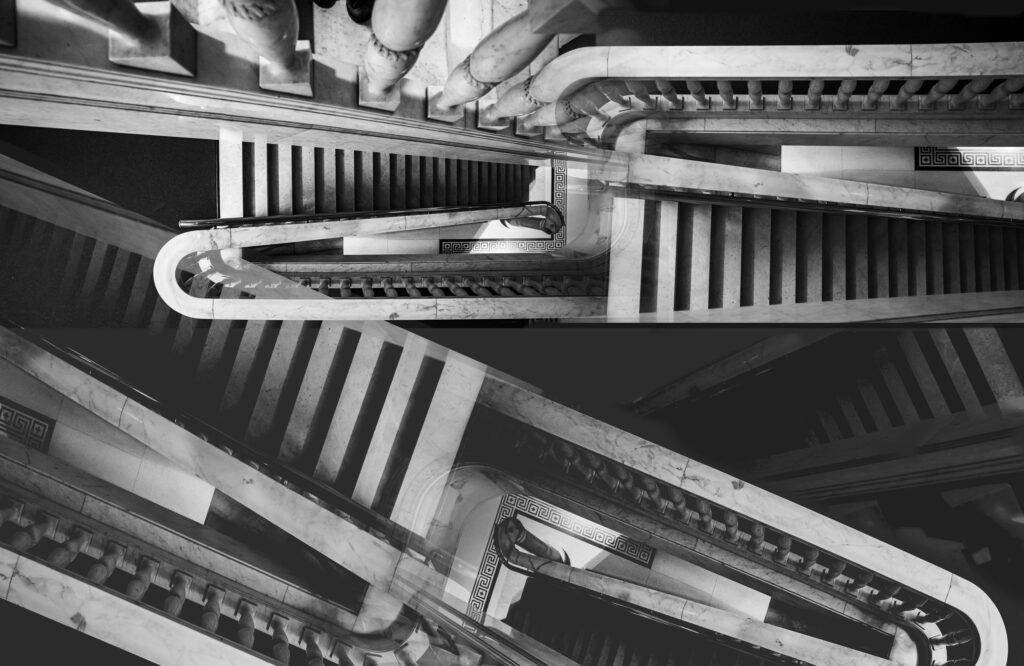
This staircase is real but copied and layered in Photoshop to create an Escher-esque scene. Photography by Jenn Mishra
Color Manipulation
Colors are easy to change in a post-processing program. You may tweak colors all the time, but push the colors too far and they become absurd. The sky turns purple, or the water is red. Before you know it, you have created an alien world. The subject may be real, but the colors are not.
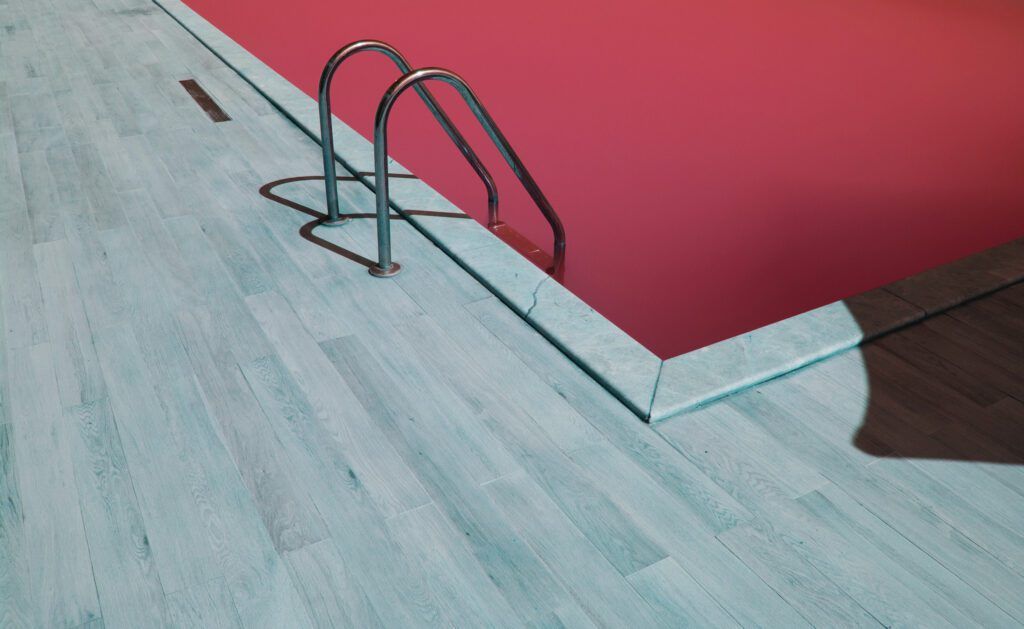
With a simple change of color, this familiar swimming pool becomes bizarrely surreal. Photography by Caroline Bertolini
Levitation Illusion
A popular surreal effect is a levitation. People appear to hover in impossible ways, or books fly around the room. You may be surprised to learn that levitation pictures are mostly real. The effect is set up in advance, and a little photo editing completes the illusion. Books are suspended by a string from the ceiling. Removing the string in post-processing makes the books appear to fly. Models are supported by a chair or a stool. The support is removed in post-processing. All it takes is a little imagination and creativity.
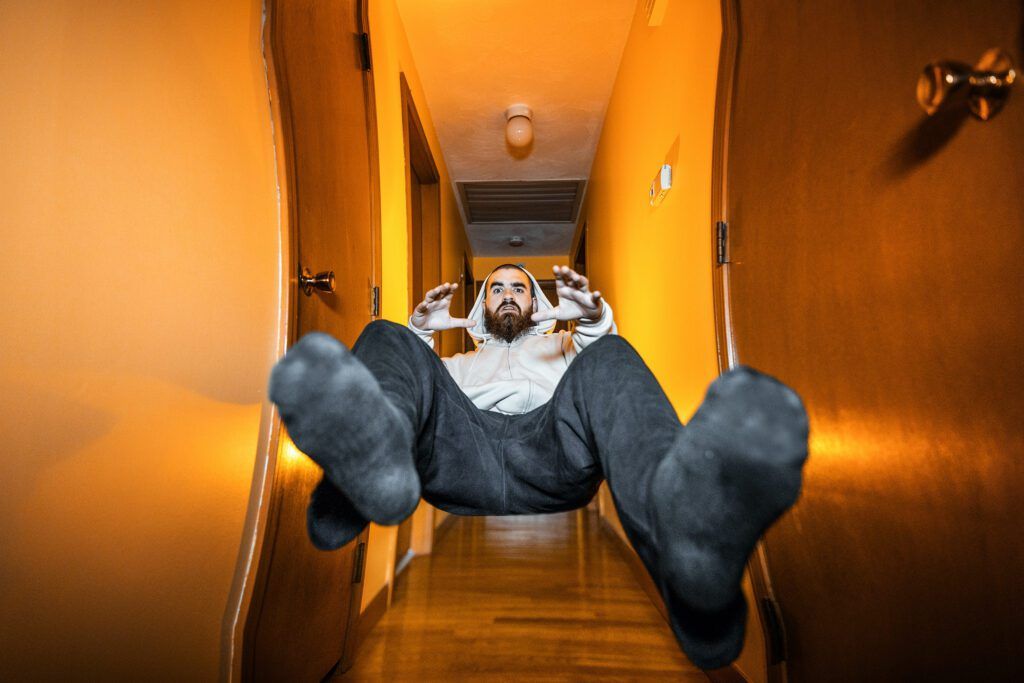
To create the levitation effect, the model is supported during the photoshoot. The support is removed in post-processing. Photography by Alex Iby
You can also create gravity-defying effects using a fast shutter speed. The model jumps or throws an object into the air. The camera freezes the subject in mid-flight, giving the illusion that it is hovering without support. Once you know the magic trick, it seems simple.
Dispersion and Other Effects
Included in some post-processing apps are surrealistic effects like dispersion. Your subject explodes across the frame, disintegrating to bits. You can create the effect in Photoshop, but some programs like PhotoDirector 365 and Lightricks by Lightleap let you apply the change with a click. Photography effects like dispersion are becoming more common in apps and programs. You may be able to create a surrealistic effect without much post-processing knowledge at all!
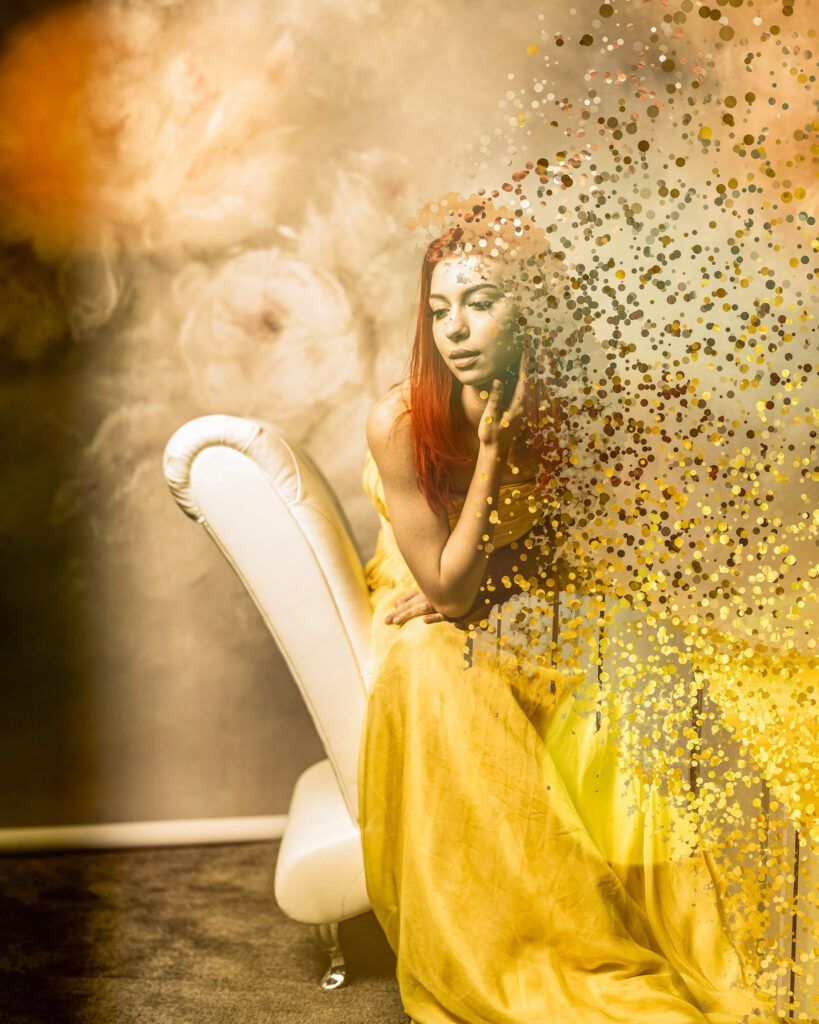
PhotoDirector 365 has a dispersion effect that lets me control what parts of the image appear to disintegrate. I can also control the direction, size of dispersion elements, spacing, and shape of the effect. Photography by Jenn Mishra
Photoshop’s Liquify filter can warp or change the shape of your subject. The Neural filters apply painterly effects that support your surrealistic vision.
Photomontage
A photomontage combines elements taken from different images to create a new world. This type of image is also called a composite. To make a composite, select the parts that you want to use from each image. The pieces of the image, often called assets, can be from your pictures or license-free stock photographs. Then, layer the assets in post-processing programs like Photoshop. To finish off a composite, blend colors and unify the light so that all the parts look like they belong in the same picture. Making composites is an art form. You are creating a believable illusion. This is a world that exists only in your imagination.
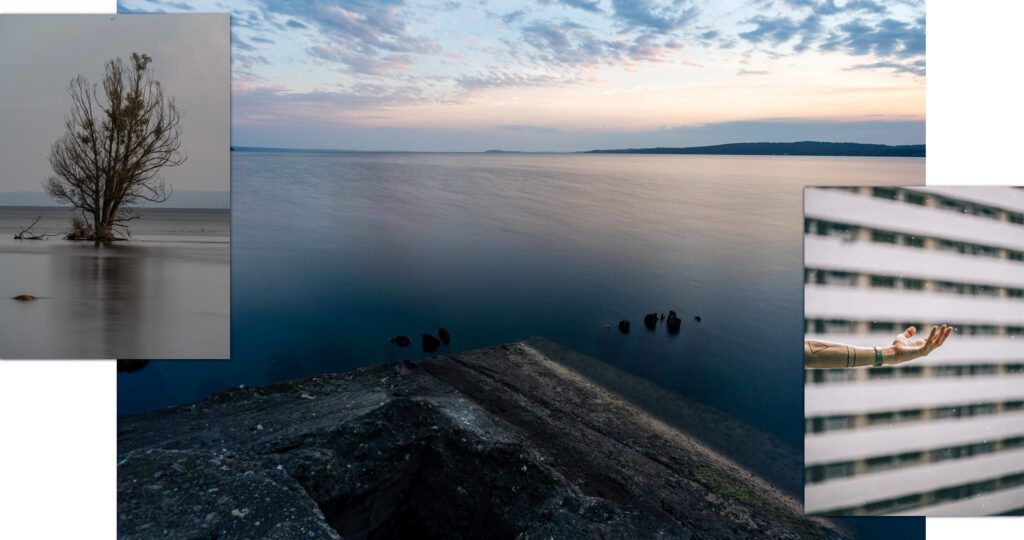
I used these images, a mix of stock and my own, and a few others to create the cover art for this guide. Photography by Jenn Mishra
Artists often use juxtaposition, placing objects or people in unreal situations. Examples include the following:
- Bus stop on a rooftop
- Grand piano in a lake
- Fish swimming through the woods
- Rock hovering overhead
- Stairway leading into the sky
Conclusion
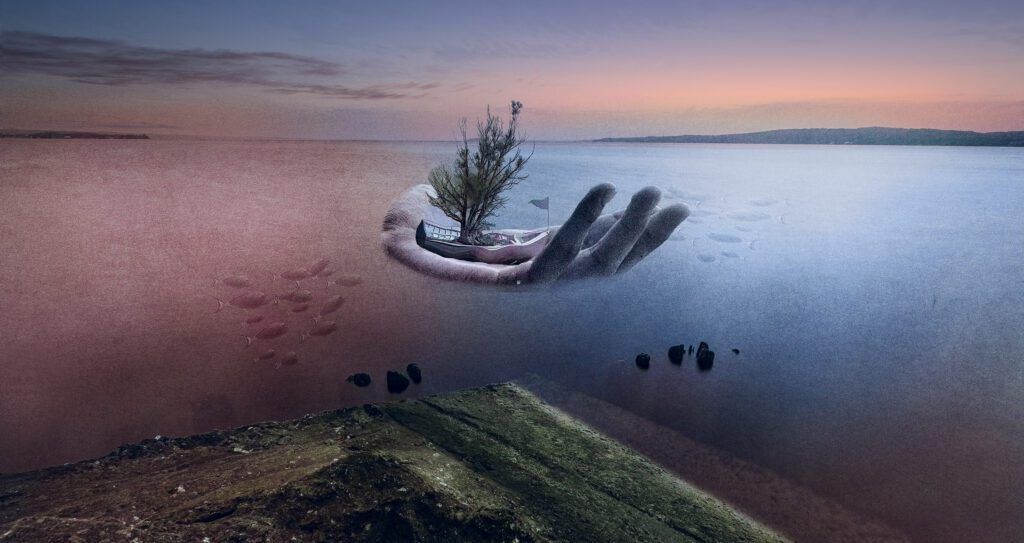
Photography by Jenn Mishra
A surrealistic photograph goes beyond reality and brings your dreams to life. But going beyond reality does not necessarily mean being complicated. It does not mean that you have to be an expert at post-processing. Surreal photos can be made in-camera with little or no photo editing.
A surrealistic photograph goes beyond reality and brings your dreams to life. But going beyond reality does not necessarily mean being complicated.
Surrealism is about exploring creativity without being restricted by reality. Post-processing programs make surrealism easier to achieve than in the age of film. There is an element of randomness expected in surrealism. Explore the AI filters and other tools provided by various apps. You may not get the effect you were looking for, but you may get something even stranger.
Surreal photography is not one thing. If you can imagine it, you can do it. It may not be simple or fast, but if you think creatively, you will find a way.
Recommended Reading: If you want to learn how to enhance your photos and create better images, grab a copy of Photzy’s premium guide: Ultimate Guide to Fundamental Editing.
Self-Check Quiz:
- How is surreal photography more than simply changing reality in post-processing?
- How can Intentional Motion Blur be used to create surreal images?
- Define juxtaposition in terms of photography.
- What are three examples of juxtaposition?
- How is forced perspective surreal?
- Describe how you might set up a forced perspective image.
- How can you make people or objects appear to levitate?
- What is a dispersion effect?
- What is another word for a composite image?
- How is a composite image created?


